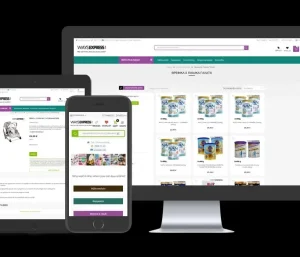Creating effective music lesson plans requires a balance of creativity, structure, and the right music teaching tools. As a music educator, your goal is to inspire and engage your students while providing them with the skills and knowledge they need to appreciate and perform music. Here’s how you can craft lesson plans that achieve these objectives and the essential tools you’ll need to make them successful.
The Importance of Structured Music Lesson Plans
Music lesson plans serve as a roadmap for your teaching, ensuring that each class has a clear purpose and direction. They help you organize your thoughts, allocate time effectively, and ensure that you cover all necessary material. Here are some key benefits of having structured music lesson plans:
- Clear Objectives: Well-defined lesson plans help you set clear, achievable objectives for each class. This allows students to understand what they will learn and what is expected of them.
- Time Management: A structured plan helps you allocate time for each activity, ensuring that you cover all essential topics without rushing or dragging out lessons.
- Consistency: Lesson plans provide consistency in your teaching, ensuring that all students receive the same quality of education, regardless of any unforeseen changes or disruptions.
- Assessment: Having a plan allows you to better assess your students’ progress and understanding. You can incorporate assessment tools and checkpoints within your lessons to gauge their development.
Key Components of Music Lesson Plans
When crafting your music lesson plans, consider including the following components to ensure they are comprehensive and effective:
- Objectives: Define what you want your students to learn by the end of the lesson. Objectives should be specific, measurable, achievable, relevant, and time-bound (SMART).
- Materials Needed: List all the materials and music teaching tools you will need for the lesson. This includes instruments, sheet music, audio equipment, and any other resources.
- Warm-Up Activities: Start each lesson with a warm-up activity to prepare students physically and mentally for the session. This could include vocal exercises, rhythm drills, or simple musical games.
- Instructional Activities: Outline the main instructional activities for the lesson. This could include teaching new concepts, practicing techniques, or working on repertoire.
- Practice and Application: Provide opportunities for students to practice and apply what they have learned. This could be individual practice, group work, or performance opportunities.
- Assessment and Feedback: Incorporate ways to assess students’ understanding and provide feedback. This could be through quizzes, performances, or informal check-ins.
- Closure: End each lesson with a closure activity that reinforces what was learned and provides a smooth transition to the next lesson. This could include a summary, discussion, or a fun activity.
Essential Music Teaching Tools
Having the right music teaching tools can significantly enhance your lessons and make learning more engaging and effective for your students. Here are some essential tools to consider:
1. Instruments and Accessories
Depending on the age group and skill level of your students, you’ll need a variety of instruments. These could include pianos, keyboards, guitars, drums, and orchestral instruments. Accessories like music stands, tuners, and metronomes are also crucial.
2. Sheet Music and Books
High-quality sheet music and method books are essential for teaching musical literacy and repertoire. Ensure you have a diverse collection that includes various genres and levels of difficulty to cater to all students.
3. Technology and Apps
Incorporating technology into your lessons can enhance learning and engagement. Music notation software, recording equipment, and educational apps can provide interactive and immersive experiences for students.
4. Audio Equipment
Good audio equipment, including speakers, microphones, and recording devices, is essential for playing back music, recording performances, and providing clear instructions.
5. Visual Aids
Visual aids such as whiteboards, music charts, and diagrams can help illustrate musical concepts and make abstract ideas more concrete.
6. Interactive Tools
Interactive tools like rhythm sticks, flashcards, and games can make learning fun and engaging, especially for younger students. These tools help reinforce concepts through hands-on activities and playful learning.
Practical Tips for Implementing Music Lesson Plans
Here are some practical tips to help you implement your music lesson plans effectively:
- Be Flexible: While having a structured plan is essential, be prepared to adapt and make changes as needed. Sometimes lessons may not go as planned, and flexibility will allow you to address students’ needs in the moment.
- Engage Students: Use a variety of teaching methods to keep students engaged. Incorporate visual, auditory, and kinesthetic activities to cater to different learning styles.
- Encourage Participation: Foster a classroom environment where students feel comfortable participating and expressing themselves. Encourage questions, discussions, and peer interactions.
- Provide Clear Instructions: Ensure that your instructions are clear and concise. Use step-by-step explanations and demonstrations to help students understand new concepts.
- Assess and Reflect: Regularly assess students’ progress and reflect on your teaching methods. Use feedback from students to improve your lesson plans and teaching strategies.
Conclusion
Creating effective music lesson plans requires careful planning, creativity, and the right music teaching tools. By setting clear objectives, incorporating engaging activities, and using essential tools, you can provide a comprehensive and enjoyable learning experience for your students. Remember to be flexible, encourage participation, and continuously assess and reflect on your teaching practices. With these strategies, you can inspire your students and help them develop a lifelong love of music.

























